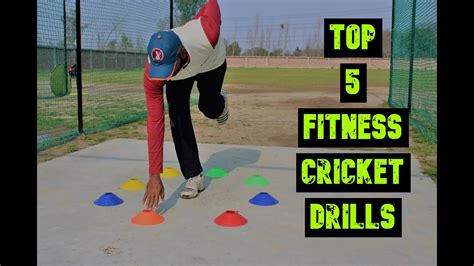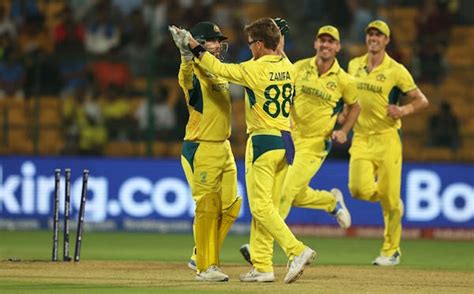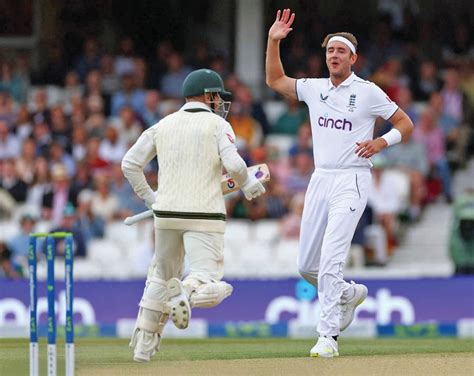Discover essential skills developed through effective cricket drills, enhance youth player performance, and learn to track progress with fun, engaging training methods.Introducing young athletes to the world of cricket can be both exciting and challenging. For youth players eager to develop their skills, the right training methods can make a significant difference in their performance and enjoyment of the game. In this article, we will explore the best cricket drills specifically designed for youth players, focusing on essential skills that foster growth and improvement. We’ll discuss how these drills not only enhance player performance but also incorporate fun elements that keep young players engaged. Additionally, we’ll provide insights on tracking progress and creating an effective training schedule. Whether you’re a coach, parent, or player, this guide aims to equip you with valuable strategies that cultivate talent and passion for cricket.
Essential Skills Developed Through Best Cricket Drills
The Best Cricket drills are designed to enhance a variety of essential skills that youth players need to develop in order to excel in the game. These drills not only focus on fundamental techniques but also promote crucial aspects of a player’s overall performance. Below, we outline some of the key skills cultivated through effective cricket training drills:
| Skill | Description |
|---|---|
| Batting Technique | Improves swing, foot movement, and shot selection, allowing players to adapt to different bowling styles. |
| Bowling Accuracy | Enhances line and length control, enabling bowlers to execute strategies effectively… |
| Fielding Agility | Develops speed and coordination for catching and ground fielding under pressure. |
| Game Awareness | Encourages players to read the game situation, fostering decision-making skills. |
| Teamwork | Promotes communication and collaborative skills necessary for successful team play. |
Incorporating Best Cricket drills into practice sessions is crucial for nurturing these skills in youth players. Regular practice not only makes a player proficient in individual skills but also prepares them for real-game scenarios, where they must apply these competencies effectively.
How Best Cricket Drills Improve Youth Player Performance
Implementing the best cricket drills is essential for enhancing the overall performance of youth players. These drills serve multiple purposes, focusing on skill development, fitness, and mental resilience. Below are key areas in which the best cricket drills contribute to improved player performance:
| Area of Improvement | Impact of Best Cricket Drills |
|---|---|
| Skill Development | Drills targeting batting, bowling, and fielding enhance technical skills, enabling players to perform better in matches. |
| Game Awareness | Situational drills foster tactical understanding, allowing players to make smarter decisions during games. |
| Physical Fitness | Fitness-focused drills improve stamina and agility, leading to stronger on-field performance. |
| Confidence Building | Repetitive practice through drills instills confidence in players, which positively impacts their performance during competitive play. |
| Teamwork and Communication | Group drills enhance communication skills and team dynamics, essential for collective performance. |
It’s clear that the best cricket drills are not just about practicing techniques; they also lay the foundation for a well-rounded player who possesses both physical abilities and game intelligence. By incorporating these drills into training sessions, coaches can ensure that youth players are fully equipped to excel on the cricket field.
Incorporating Fun Elements in Best Cricket Drills
To ensure youth players remain engaged and excited about their practice sessions, integrating fun elements into the Best Cricket drills is essential. This not only boosts their enthusiasm but also enhances their learning experience. Here are several strategies to make drills enjoyable:
- Game-Based Drills: Transform standard drills into competitive games. For example, set up a series of mini-matches or challenges where players can score points based on their performance in specific skills.
- Creative Scoring Systems: Introduce unique scoring methods in drills. For example, players could earn bonus points for executing a skill with flair or creativity, making even routine practice sessions exciting.
- Themed Practices: Occasionally, hold themed practice sessions based on popular cricket events or holidays. This could include dressing up or creating special challenges that relate to the theme.
- Incorporating Technology: Use apps and gadgets to monitor performance, creating a more interactive experience. Players can visually see their improvements over time, making the process rewarding and fun.
- Team Challenges: Organize players into teams and set challenges that require teamwork and collaboration, fostering camaraderie and a spirit of friendly competition.
By adding these engaging elements to the Best Cricket drills, coaches can cultivate an enjoyable atmosphere where youth players are eager to learn and develop their skills. Creating a balance between skill development and enjoyment is key to maintaining long-term interest in the sport.
Tracking Progress: Measuring Results of Cricket Drills
Measuring the effectiveness of best cricket drills is essential for educators, coaches, and players alike. Keeping track of player progress not only motivates young athletes but also helps identify areas for improvement. Here are some effective strategies for tracking progress:
| Method | Description | Advantages |
|---|---|---|
| Performance Metrics | Set specific metrics such as runs scored, catches taken, or wickets achieved during practice sessions. | Provides quantifiable data to assess improvement over time. |
| Video Analysis | Record practice sessions and matches to analyze technique and decision-making. | Visual feedback can reveal strengths and weaknesses that may not be apparent otherwise. |
| Self-Assessment | Encourage players to reflect on their own performance and set personal goals. | Fosters independence and self-awareness in young athletes. |
| Coach Feedback | Regular evaluations by coaches to provide constructive criticism and guidance. | Ensures players receive expert advice tailored to their individual needs. |
Utilizing these methods will lead to a more structured approach to skill development within the realm of best cricket. By creating benchmarks and regularly reviewing performance, coaches can make informed decisions about training adjustments, ensuring that youth players reach their full potential in the sport.
Creating a Training Schedule for Effective Cricket Drills
To maximize the benefits of the best cricket drills for youth players, having a well-structured training schedule is essential. This schedule not only ensures consistency but also enables players to progressively improve their skills. Here are some key considerations when creating an effective training schedule:
- Frequency: Plan training sessions 2-3 times per week, allowing adequate time for rest and recovery. This frequency helps maintain enthusiasm and reduces the risk of burnout.
- Session Duration: Keep training sessions between 60 to 90 minutes. This duration is optimal for maintaining focus and energy levels in young players.
- Warm-Up and Cool Down: Include a 10-15 minute warm-up at the beginning of each session to prepare the body and a cool-down at the end to aid recovery.
- Variety: Incorporate a mix of skills-based drills—such as batting, bowling, fielding, and fitness drills—into the schedule. This keeps the sessions engaging and ensures all fundamental areas are covered.
- Progression: Gradually increase the complexity of the drills as players improve. This not only keeps them challenged but also ensures continuous skill development.
- Feedback and Adjustments: Allocate time for feedback from coaches or peers after drills. Adjust the subsequent sessions based on this feedback to address any areas of improvement.
Integrating these elements into your training schedule will ensure that youth players engage with the best cricket drills effectively, resulting in a more enjoyable and productive learning experience.
Frequently Asked Questions
What are some effective warm-up drills for youth cricket players?
Some effective warm-up drills include dynamic stretching, light jogging, and agility ladder drills. These help to enhance mobility and prevent injuries.
How can batting techniques be improved in youth players?
Batting techniques can be improved through drills like shadow batting, hand-eye coordination exercises, and front foot/back foot drills to enhance footwork and shot selection.
What fielding drills are recommended for developing essential skills?
Recommended fielding drills include catching practice with different types of catches, ground fielding drills, and relay throw exercises to improve accuracy and speed.
Why is it important to focus on bowling drills for youth players?
Focusing on bowling drills helps youth players develop their bowling action, accuracy, and consistency, which are critical for their growth and success in the game.
Can you suggest some fun drills to keep youth players engaged?
Fun drills like ‘Target Practice’ where players aim at cones or ‘Cricket Bowling Games’ that involve scoring points can keep players engaged while developing their skills.
How often should youth players practice drills?
Youth players should aim to practice drills at least 2-3 times per week, combining both skill development and match-play scenarios to reinforce learning.
What role does teamwork play in youth cricket drills?
Teamwork is crucial in youth cricket drills as it fosters communication, collaboration, and a sense of camaraderie among players, enhancing their overall performance on the field.









